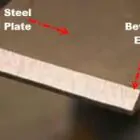Why do you need robot integrator?
If, for example, an automaker or supplier needs a new way to make car doors, there are many things to think about. For example, the body parts must be worked on in the right order and with the right method for each step. For this to work, many parts must work together smoothly, such as the industrial robots that move the parts and put them in the right place and the welding robots and welding machines that join the parts together. Putting together and coordinating all the parts of a system is a big responsibility that takes a lot of work. The maker is happy to give this to a specialist, called a “robot integrator,” who knows what to do with it.
Robot integrators plan and build production systems, from small assembly stations to whole production lines with fifteen or more robots. By doing this, we add robots to a production environment with many machines. So, the customer saves time and effort by getting everything they need from one place, and they also get the benefit of our experience. As an integrator, we also take full responsibility for the whole system. This greatly reduces the risk for the customer.
How does a project like this work in the real world?
Everything starts with a plan. Robot Integrator must keep a close eye on three things during the whole planning process:
- Quality
- Reliability
- Cycle time
Each system is different and made just for the customer. At the start of every project, the most important thing is to understand the customer’s needs and make them clear. The way things are done varies from business to business.
In the automotive industry, there are certain rules about how a product should be made. This is a very detailed form that the customer has to fill out, and it has everything that needs to be there. For instance:
Hardware and software architecture as it is now.
Systems for security.
Examples of how to use.
Sensors were needed.
System performance was needed.
User interface requirements.
In the metalworking and capital goods industries, where these kinds of specifications are rarely used, things are different. In these fields, we help the customer figure out and define exactly what they need. Then, we come up with a system that the customer and we agree on.
When setting up a robot system, what is important?
Installation and start-up must be done quickly at the customer’s site. Still, it takes experience and a good gut feeling to set the welding parameters correctly on-site so that the required quality is also met while the job is being done.
We train our customers’ employees on-site to make sure everything runs smoothly and the work is of high quality. Of course, we’re also here to help and give advice afterward, like if you need to restart the system because something went wrong. Even if the customer can’t or doesn’t want to take care of maintenance tasks on their own, ACG can help.
Welding tests make sure the quality is good.
Quality is a big deal, especially when it comes to welding, which is a complicated process whose success depends on a lot of different things. When a project uses a new method or a special material like aluminium or stainless steel, we test the welding of the parts ahead of time.
How do we choose the right tools for welding for robot integration?
Welding is called a “special process,” which shows how hard this method of joining things is. So, when we choose welding tools, we pay special attention to:
It was easy to set the parameters.
Simple to take care of.
Stability of the Center Point of the Tool.
A welding system should be easy to set up and take care of. Aid systems should help the welder as much as possible. For example, a teach mode can save time when programming the robot, and stabilisers for penetration and arc length make sure that the weld seam is of high quality in the LSC and PMC welding processes. For robot applications, it is also important to keep the Tool Center Point (TCP) the same.





